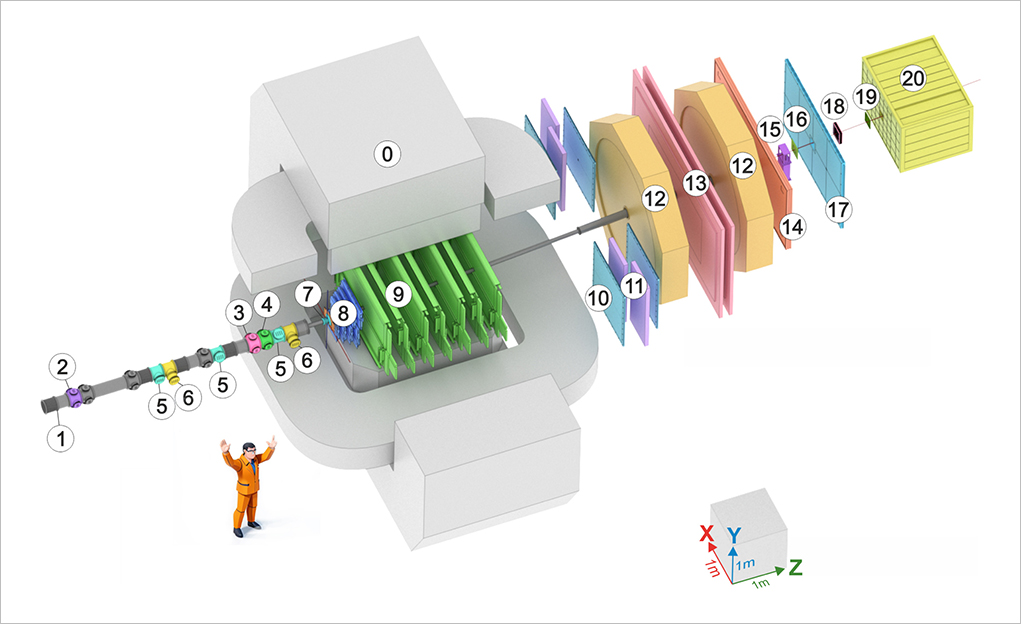Description of BM@N Spectrometer at NICA Accelerator Complex
News, 23 August 2024
The BM@N (Baryonic Matter at Nuclotron) Collaboration of the NICA Megascience Project prepared a technical description of the BM@N Spectrometer including all its subsystems in an article published in Nuclear Instruments and Methods in Physics Research – section A. The authors of the work are affiliated with the Joint Institute for Nuclear Research and scientific and educational centres in Bulgaria, China, Israel, Kazakhstan, Russia, and Uzbekistan.
BM@N is the first experiment operating and taking data at the Nuclotron/NICA Ion-Accelerating Complex. The aim of the BM@N Experiment is to study interactions of relativistic heavy-ion beams with fixed targets in the energy range that allows reaching high densities of baryonic matter.
The BM@N Detector is a forward spectrometer that covers the pseudorapidity range
1,6 ≤ η ≤ 4,4. The facility comprises a dipole magnet along with several detector systems to monitor the beam, identify produced charged particles, measure their momentum, and determine the geometry of nucleus–nucleus collisions.
 Schematic view of the BM@N Facility, as used in the first physics run in 2023 with a Xe beam
Schematic view of the BM@N Facility, as used in the first physics run in 2023 with a Xe beam
The Nuclotron provides the experiment with beams of a variety of particles, from protons to gold ions, with kinetic energy per nucleon (A GeV) in the range from 1 to 6 A GeV (where A is the atomic mass number) for light ions with a Z/A ratio of ~ 0,5 and up to 4.5 A GeV for heavy ions with a Z/A ratio of ~ 0,4. At such energies, the density of nucleons in the fireball created by two colliding heavy nuclei is 3–4 times higher than the nuclear saturation density.
The primary goal of the experiment is to explore the QCD phase diagram in the region of high baryonic chemical potential, to search for the onset of critical phenomena, in particular, the conjectured critical end point, and to constrain the parameters of the equation of state (EoS) of high-density nuclear matter. In addition, the Nuclotron energies are high enough to study mesons and hyperons with strange quarks produced in nucleus–nucleus collisions close to the kinematic threshold. Studies of the excitation function of strange particle production below and near to the kinematical threshold make it possible to distinguish the hard behaviour of the EoS from the soft one.